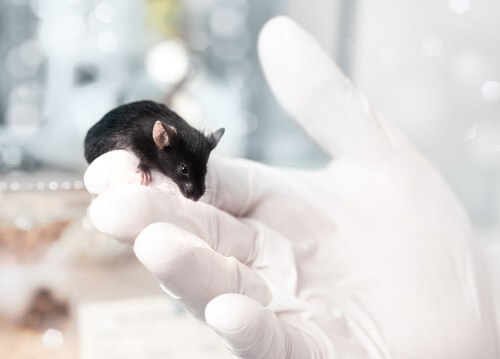In a study carried out in mice, the scientists found that a mechanism that operates in the brain in stressful situations ("stress"), also serves as a kind of social switch: it increases the mice's connections with "friends" and "acquaintances", or it reduces these connections, and makes the mice want to get to know each other New mice

When we are debating whether to move house, change jobs or leave the parents' house, we must choose between the relative security of a familiar social environment and the uncertainty that accompanies meeting a new environment and strangers. Weizmann Institute of Science scientists recently discovered how these types of choices may be coded in the brain.
In a study carried out in mice, the scientists found that a mechanism that operates in the brain in stressful situations ("stress"), also serves as a kind of social switch: it increases the mice's connections with "friends" and "acquaintances", or it reduces these connections, and makes the mice want to get to know each other New mice. Since similar excitation systems exist in the human brain, the findings of the study - which was published yesterday in the scientific journal Nature Neuroscience - may indicate a similar mechanism responsible for behavioral phenomena in humans, including disorders of social functioning, autism or schizophrenia.
The research, which was carried out in the laboratory of Prof. Alon Chen in the Department of Neurobiology at the Weizmann Institute of Science, was led by the senior intern Dr. Yair Shemesh, and the post-doctoral researcher Dr. Oren Furkosh. "Most social gatherings are accompanied by a certain amount of pressure, even if it is a meeting with familiar people, such as a holiday dinner with the extended family," explains Dr. Shemesh. "From an evolutionary point of view, the fear of social interactions is essential for safe and successful conduct. That's why we decided to test - in mice - how the molecular mechanisms in the brain, which are involved in managing stressful situations, affect social behavior." Prof. Chen adds: "In human society, the expectations of the general often conflict with the needs of the individual. In order to function in society, we seek the right balance between the pressures exerted on us and our emotional reactions to these pressures."
Most of the studies on dealings of mice with a social environment were carried out in the past on pairs of mice and not on groups, due to the complexity of the set of contacts between many animals. To overcome this difficulty, the institute's scientists developed a unique system, which is based on observations using a video camera, and the results were analyzed using a computer program written specifically for this purpose. In this way, the scientists were able to quantify various interactions - such as approaching, seeking contact, attacking or escaping - between the mice within the group, or with foreign mice that were separated from them by means of a net. Thus it became clear that one of the molecular mechanisms involved in managing stressful situations in the mice's brain determines the nature of their relationships with their own kind. This mechanism includes the small signaling molecule called urocortin-3, and the receptor to which this molecule binds in nerve cells in the brain. Both - both urocortin-3 and its receptor - are part of the system called CRF, which plays a central role in dealing with stress, and both are prominently expressed in the middle amygdala - the area of the brain responsible for social behavior in mice.
Mice whose brains had high levels of urocortin-3 actively sought out acquaintances with new mice, while mice whose brains had the activity of urocortin-3 and its receptor blocked, mainly sought to be in contact with familiar mice, and avoided "associating" with new mice.
Dr. Purkosh: "Mice in the wild live in groups consisting of a dominant male and a number of junior males and females. The social challenges in a group are very different from dealing with invasive mice. Therefore, it is not surprising that there is a mechanism that determines different social coping in these two situations".
Mathias Mann, Sergey Anfilov, Dr. Yehezkel Steinberg, Sharon Menshirov, Tamar Shalfoversky, Dr. Gili Ezra, Dr. Elena Adler, Dr. Yair Ben-Afrim, Shoshana Gil, Dr. Sharon Harmati, Prof. Elad Schneidman, and Dr. Ofer Yizhar from the Department of Neurobiology of the Institute, Dr. Yael Kuperman from the Department of Veterinary Resources of the Institute, Dr. Evan Elliott and Dr. Lowry Taboi from the Galilee Faculty of Medicine of Bar-Ilan University, and scientists from the Max Planck Institute for Psychiatry in Munich .
